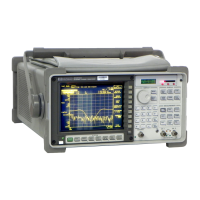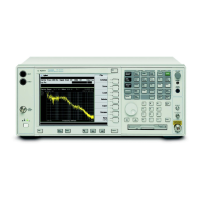3 Specify the measurement parameters.
Press [
Freq
][
MAX ORDER
] <number> [
ORDERS
] to specify the highest order you want
to track.
Press [
MIN RPM
] <number> [
RPM
], then press [
MAX RPM
] <number> [
RPM
]tospecify
the range of frequencies over which you will measure.
Press [
TRACK POINTS
]<number>[
ENTER
] to specify the number of measurement
points in the track.
Press [
TRACK SETUP
], then use the [
TRACK x ORDER
] softkeys to specify which orders
you want to track.
Press [
Input
].
For each active channel, press [
CHANNEL 1 2
] (or [
CHANNEL 1 2 3 4
]) to highlight its
channel number, then press [
CHANNEL x RANGE
] <number> <unit>.
4 Configure the display.
Press [
Active Trace
], then press [
A
] if you are measuring with one transducer, [
AB
]if
you are measuring with two, or [
ABCD
] if you are measuring with three or four.
Press [
Meas Data
][
ALL CHANNELS
][
MORE CHOICES
][
ORDER TRK CHANNEL *
], then
press the [
TRACK x ORD n.nn
] softkey corresponding to the track you want to monitor.
Press [
Scale
], then press [
AUTOSCALE ON OFF
] to highlight ON.
5 Turn on the DUT, then press [
Start
].
If you prefer to look at several tracks from a single channel (or at different tracks from
different channels) activate each trace separately in step 4. Then, while a particular
trace is activated, you can select the channel and track you want to display in that
trace. Finally, you can press [
Disp Format
][
QUAD
] to display all four traces at once.
See “To measure an order spectrum” for additional information about setting ranges
for your input channels.
Agilent 35670A
Operator's Guide Measuring Rotating Machinery
1-15

